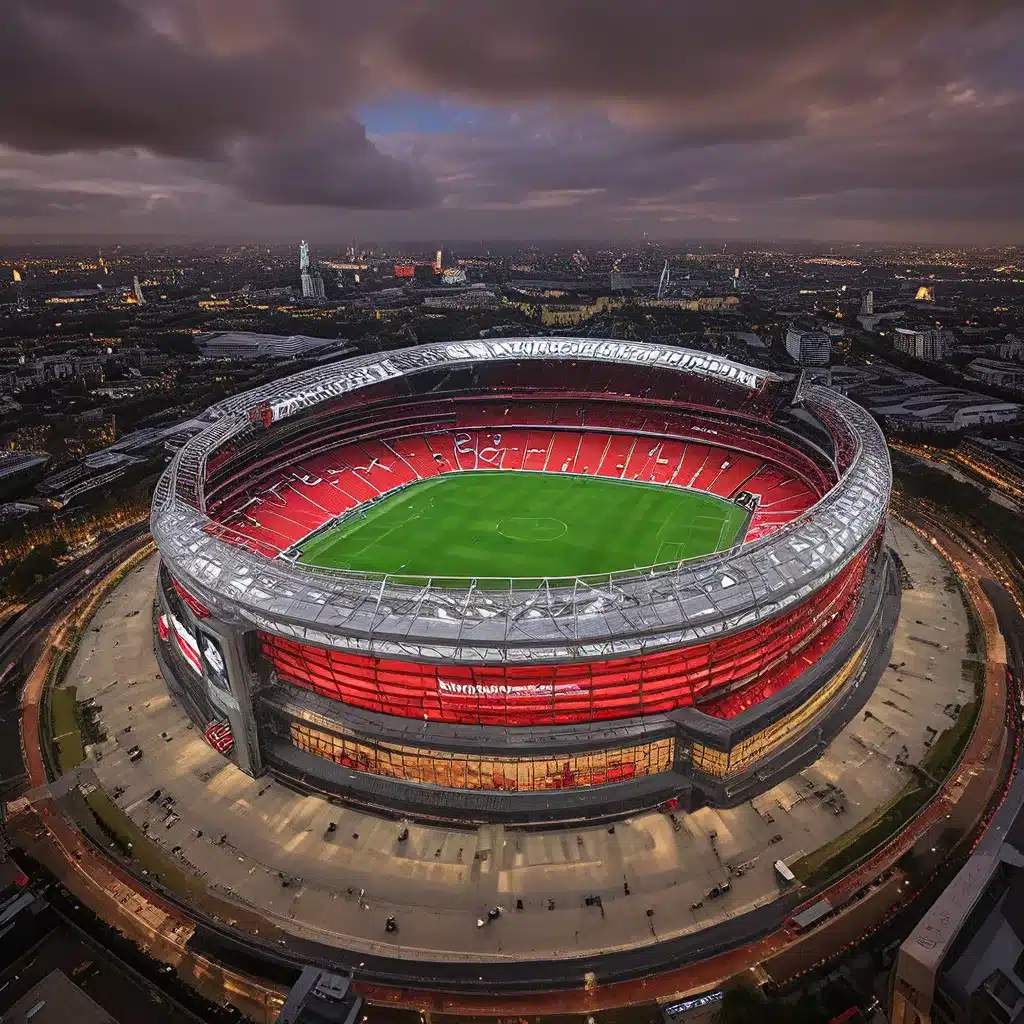
The Iconic Home of Arsenal Football Club
The Emirates Stadium, situated in the heart of North London, is a modern architectural marvel that has captivated football enthusiasts and casual observers alike. As the home ground of the renowned Arsenal Football Club, this state-of-the-art stadium has become a symbol of the club’s rich history and its commitment to providing a world-class experience for its devoted fans.
Completed in 2006, the Emirates Stadium was designed by the renowned architectural firm Populous (formerly known as Lobb Sports Architecture) and was built to replace Arsenal’s former home, the iconic Highbury Stadium. The decision to construct a new stadium was driven by the club’s desire to expand its seating capacity and modernize its facilities, catering to the growing demands of the 21st-century football landscape.
Architectural Marvels and Sustainable Design
The Emirates Stadium is a true architectural masterpiece, boasting a sleek and contemporary design that seamlessly blends function and form. The stadium’s striking exterior, characterized by its distinctive sweeping curved roof and elegant glass facade, is a testament to the ingenuity and vision of its designers.
One of the most remarkable features of the Emirates Stadium is its commitment to sustainable design. The stadium’s energy-efficient systems, including solar panels and water-recycling facilities, have earned it widespread recognition for its eco-friendly approach. This emphasis on sustainability not only aligns with Arsenal’s values but also serves as a model for other sports venues around the world.
Enhancing the Matchday Experience
Beyond its architectural excellence, the Emirates Stadium has been meticulously designed to provide an exceptional matchday experience for its visitors. The stadium’s state-of-the-art facilities, including comfortable seating, modern concession stands, and advanced hospitality suites, cater to the diverse needs and preferences of the club’s loyal supporters.
The matchday atmosphere at the Emirates Stadium is electric, with the stadium’s acoustics and seating layout engineered to amplify the passionate chants and roars of the fans. The massive video screens and cutting-edge audio systems ensure that every moment of the match is captured and shared with the enthusiastic crowd.
Embracing the Local Community
The Emirates Stadium’s impact extends beyond the realm of football, as it has become an integral part of the local community in North London. The stadium’s community outreach programs, which include educational initiatives and charitable partnerships, have helped to forge strong connections between the club and the surrounding neighborhoods.
The stadium’s iconic status has also made it a popular destination for tourists and visitors from around the world, who come to experience the thrill of a live Arsenal match or simply to marvel at the architectural wonders of this remarkable venue.
Continuing Legacy and Future Expansion
As Arsenal continues to thrive both on and off the pitch, the Emirates Stadium remains at the heart of the club’s aspirations. The stadium’s adaptability and capacity for future expansion have been carefully considered, ensuring that it can keep pace with the evolving demands of modern football.
Ongoing research and development within the stadium’s design and operations teams are constantly exploring ways to enhance the fan experience, improve sustainability measures, and solidify the Emirates Stadium’s position as one of the world’s premier football venues.
Through its architectural excellence, sustainable design, and commitment to the community, the Emirates Stadium has become a true icon of the sport, inspiring football enthusiasts and architectural connoisseurs alike. As Arsenal’s home ground, it stands as a testament to the club’s rich heritage and its unwavering dedication to providing a world-class experience for its devoted supporters.
Explore more about the world’s most iconic sports stadiums at Old Stadium Journey.

